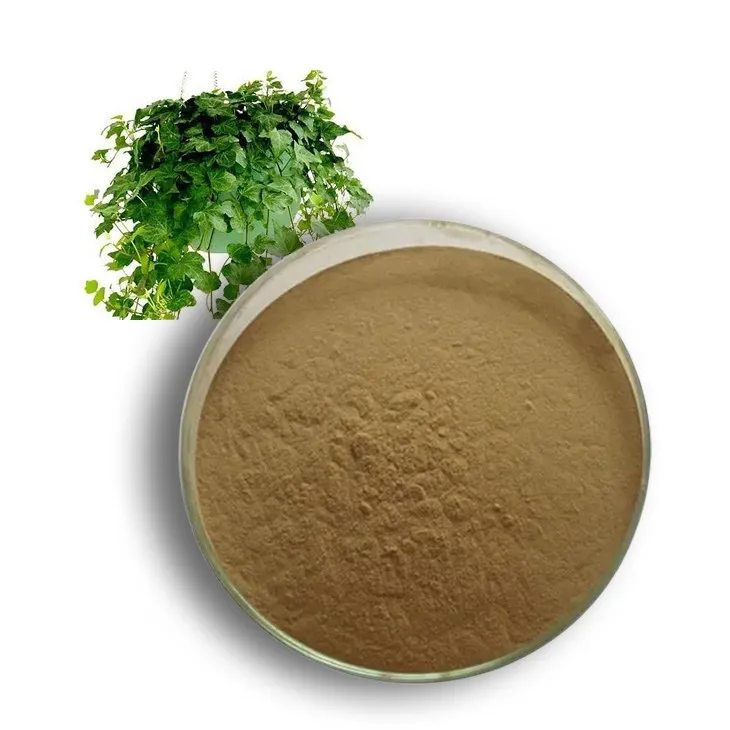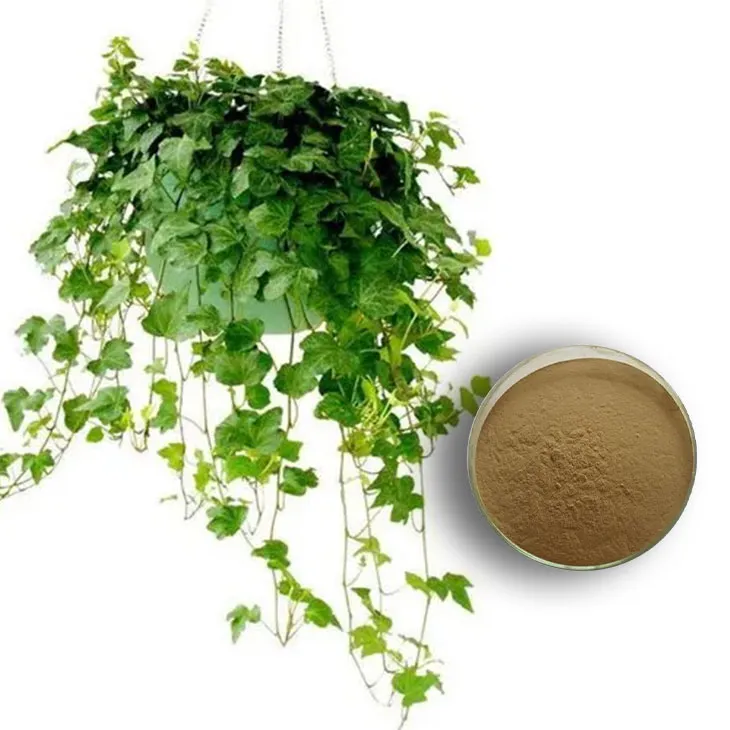- 0086-571-85302990
- sales@greenskybio.com
Ivy Extract: Nature's Best - Kept Secret.
2024-11-12

Introduction
Nature is a vast repository of remedies and substances that have been used by humanity for centuries. Among these, Ivy Extract stands out as a relatively under - explored yet highly valuable resource. Ivy, a common plant found in many parts of the world, has a long history of use in traditional medicine, and its potential applications in modern pharmacology and natural cosmetics are only now beginning to be fully understood.

Traditional Medicine and Ivy Extract
Historical Use
In traditional medicine systems across different cultures, ivy has been used for various ailments. For example, in European traditional medicine, ivy leaves were often used as an expectorant. They were prepared as infusions or tinctures to help relieve coughs and congestion. The ancient Greeks also had some knowledge of the plant's medicinal properties. Ivy was believed to have properties that could soothe irritated throats and lungs. These historical uses suggest that Ivy Extract may contain compounds with beneficial effects on the respiratory system.Traditional Preparation Methods
Traditional preparations of ivy extract involved simple yet effective techniques. One common method was to dry the ivy leaves and then steep them in hot water to make an infusion. Another approach was to soak the leaves in alcohol to create a tincture. These preparations were then administered orally in small doses. However, it's important to note that while traditional medicine has provided the basis for exploring ivy extract, modern scientific methods are needed to fully understand and validate its potential.
Modern Pharmacology and Ivy Extract
Active Compounds
Modern pharmacology has identified several active compounds in ivy extract. One of the most important is saponins. Saponins are glycosides that have a variety of biological activities. In the case of ivy extract, saponins are thought to contribute to its expectorant and anti - inflammatory properties. Another compound found in ivy is flavonoids. Flavonoids are known for their antioxidant properties, which can help protect cells from damage. The presence of these active compounds makes ivy extract a promising candidate for the development of new drugs.Research on Therapeutic Effects
There has been a growing body of research on the therapeutic effects of ivy extract. Studies have shown that it can indeed have a positive impact on the respiratory system. For example, in some clinical trials, ivy extract has been shown to reduce the severity and duration of coughs in patients with bronchitis. It may also help improve lung function in patients with mild respiratory disorders. Additionally, research is exploring its potential in treating other conditions such as skin diseases. Some preliminary studies suggest that the anti - inflammatory properties of ivy extract could be beneficial for certain skin inflammations.Challenges in Pharmacological Research
Despite the promising findings, there are also challenges in the pharmacological research of ivy extract. One major challenge is standardizing the extract. Since the composition of ivy can vary depending on factors such as the plant's origin, growth conditions, and extraction methods, it can be difficult to ensure consistent results in different studies. Another challenge is understanding the long - term effects and potential side effects of ivy extract. More extensive and long - term clinical trials are needed to fully evaluate its safety and efficacy.
Natural Cosmetics and Ivy Extract
Benefits for the Skin
In the world of natural cosmetics, ivy extract offers several benefits for the skin. Its antioxidant properties, due to the presence of flavonoids, can help prevent premature aging of the skin. Free radicals in the environment can cause damage to skin cells, leading to wrinkles and a dull complexion. Ivy extract can combat these free radicals, keeping the skin looking youthful and healthy. Additionally, the anti - inflammatory properties of ivy extract can be useful for treating skin conditions such as acne and eczema. It can reduce redness and inflammation, promoting a more even skin tone.Use in Cosmetic Formulations
Ivy extract is being incorporated into various cosmetic formulations. It can be found in creams, lotions, and serums. In creams, it can provide moisturizing and anti - aging benefits. In lotions, it can help soothe irritated skin. And in serums, it can be used to target specific skin concerns such as hyperpigmentation. However, like in pharmacology, there are challenges in using ivy extract in cosmetics. One challenge is ensuring the stability of the extract in different cosmetic formulations. Another is determining the optimal concentration of the extract to achieve the best results without causing any adverse reactions.Conservation and Sustainable Use of Ivy
The Importance of Conservation
As the potential of ivy extract becomes more recognized, it is crucial to ensure the conservation of ivy plants. Over - harvesting of ivy can have a negative impact on the ecosystem. Ivy provides habitat and food for various animals and insects. For example, some bird species use ivy as a nesting site. Therefore, sustainable harvesting practices need to be developed to protect the plant and its associated biodiversity.Sustainable Harvesting Practices
Sustainable harvesting of ivy involves several key principles. First, only a certain percentage of the ivy plants in an area should be harvested to allow for regeneration. Second, harvesting should be done in a way that minimizes damage to the surrounding environment. This could include avoiding areas where rare or endangered species are present. Third, efforts should be made to promote the cultivation of ivy in a controlled environment to reduce the pressure on wild populations.Conclusion
Ivy extract is truly nature's best - kept secret. Its long - standing use in traditional medicine, emerging potential in modern pharmacology, and growing applications in natural cosmetics all point to its great value. However, more research is needed to fully unlock its secrets and overcome the challenges in its use. At the same time, conservation efforts must be made to ensure the sustainable use of ivy so that future generations can also benefit from this remarkable natural resource.
FAQ:
What are the main components of ivy extract?
Ivy extract contains various components, such as saponins, flavonoids, and alkaloids. These components contribute to its different properties and potential uses in medicine, pharmacology, and cosmetics.
How has ivy extract been used in traditional medicine?
In traditional medicine, ivy extract has been used for treating respiratory problems like coughs and bronchitis. It was often prepared as infusions or poultices. Some traditional healers believed that its anti - inflammatory properties could help relieve symptoms associated with these conditions.
What is the role of ivy extract in modern pharmacology?
In modern pharmacology, ivy extract is being studied for its potential in drug development. Its anti - inflammatory and antioxidant properties make it a candidate for treating various diseases. For example, research is being done on its use in anti - cancer drugs due to its ability to target certain cellular mechanisms related to cancer growth.
How is ivy extract used in natural cosmetics?
Ivy extract is used in natural cosmetics for its skin - conditioning properties. It can help improve skin hydration and elasticity. It is also used in some products for its anti - aging potential as it may help reduce the appearance of wrinkles and fine lines.
Are there any potential side effects of ivy extract?
While ivy extract has many potential benefits, it may also have some side effects. Ingesting large amounts may cause stomach upset, vomiting, or diarrhea. Also, some people may be allergic to it, so it is important to do a patch test before using products containing ivy extract topically.
Related literature
- The Therapeutic Potential of Ivy Extract in Respiratory Disorders"
- "Ivy Extract: A Hidden Gem in Natural Cosmetics"
- "Modern Pharmacological Research on Ivy Extract"
- ▶ Hesperidin
- ▶ citrus bioflavonoids
- ▶ plant extract
- ▶ lycopene
- ▶ Diosmin
- ▶ Grape seed extract
- ▶ Sea buckthorn Juice Powder
- ▶ Beetroot powder
- ▶ Hops Extract
- ▶ Artichoke Extract
- ▶ Reishi mushroom extract
- ▶ Astaxanthin
- ▶ Green Tea Extract
- ▶ Curcumin Extract
- ▶ Horse Chestnut Extract
- ▶ Other Problems
- ▶ Boswellia Serrata Extract
- ▶ Resveratrol Extract
- ▶ Marigold Extract
- ▶ Grape Leaf Extract
- ▶ blog3
-
Cranberry Plants and Skin - care Products.
2024-11-12
-
Eyebright Extract
2024-11-12
-
Horse Chestnut Extract
2024-11-12
-
Oat Straw Extract Powder
2024-11-12
-
Shikonin
2024-11-12
-
Grape Seed Extract
2024-11-12
-
Andrographis Paniculata Extract Powder
2024-11-12
-
Scutellaria Extract
2024-11-12
-
Aguaje Extract
2024-11-12
-
Lemon Juice Powder
2024-11-12
-
Agaricus Blazei Extract
2024-11-12





















